Fatah (Arabic: فتح) (also known as Fateh); a reverse acronym from the Arabic name حركة التحرير الوطني الفلسطيني ḥarakat al-taḥrīr al-waṭanī al-filasṭīnī (literally: “Palestinian National Liberation Movement”) is a major Palestinian political party and the largest organization in the Palestine Liberation Organization (PLO), a multi-party confederation. In Palestinian politics it is on the center-left of the spectrum. It is mainly secular and nationalist although not predominantly socialist.
In the January 25, 2006 parliamentary election, the party lost its majority in the Palestinian parliament to Hamas, and resigned all cabinet positions, choosing to act as the official opposition.
Meaning of name
“Fatah” means “conquest,” “victory” or literally “opening“, in the Arabic language. The acronym “Fatḥ (or Fatah)” is created from the complete Arabic name: HArakat al-TAhrir al-Watani al-Filastini, becoming “HATAF“, which, since it means “death” in Arabic, was reversed to become “FATAH“. The word Fatah is used in religious discourse to signify the Islamic expansion in the first centuries of Islamic history—as in Fath al-Sham, the “opening of the Levant” — and so has positive connotations for Muslims. The term “Fatah” also has religious significance in that it is the name of the 48th sura, or chapter, of the Qu’ran, which according to the major Muslim commentators details the story of the Treaty of Hudaybiyyah whereby Muhammad successfully conquered Mecca by first signing a peace agreement, and then later seeking to abrogate it when he had forces sufficient to secure certain victory over the Meccans. This Qu’ranic precedent was cited by Yasser Arafat as justification for his signing the Oslo Accords with Israel.
Two most important decision-making bodies is Central Committee of Fatah and the Fatah Revolutionary Council. Central Committee is mainly an executive body, while the Revolutionary Council is Fatah’s legislative body. The Sixth General Assembly of Fatah Movement was held on 4 august 2009, Bethlehem (West Bank), nearly 16 years after the advent of the Oslo Conference and 20 years since the last Fatah convention.
The Fatah official emblem shows two fists holding rifles and a hand grenade superimposed on a map of historic Palestine (i.e. the post-1922 British Mandate borders, including present-day Israel, the West Bank and the Gaza Strip).
History
The movement, which espoused a Palestinian nationalist ideology in which Palestine would be liberated by the actions of Palestinians, was founded in 1958 or 1959 by members of the Palestinian diaspora – principally professionals working in the Gulf States who had been refugees in Gaza and had gone on to study in Cairo. The most notable of these was Yasser Arafat, who was head of the Palestinian student movement in Cairo from 1952 to 1956. Fatah became the dominant force in Palestinian politics after the 1967 Six-Day War dealt the coup de grâce to the Arab nationalism that had inspired George Habash’s Arab Nationalist Movement. The November 1959 edition of Fatah’s underground journal, Filastinuna, indicated that the movement was motivated by the status of the Palestinian refugees in the Arab world:
The youth of the catastrophe (shibab al-nakba) are dispersed… Life in the tent has become as miserable as death… [T]o die for our beloved Fatherland is better and more honorable than life, which forces us to eat our daily bread under humiliations or to receive it as charity at the cost of our honour… We, the sons of the catastrophe, are no longer willing to live this dirty, despicable life, this life which has destroyed our cultural, moral and political existence and destroyed our human dignity. (quoted in Baumgarten, 2005, p. 32).
From the beginning the armed struggle, as manifested in the Great Uprising of 1936-1939 and the military role of Palestinian fighters under the leadership of Abd al-Qadir al-Husayni in the 1948 Arab-Israeli War, was central to Fatah’s ideology. Fatah joined the PLO and won the leadership role in 1969, after which the other consitutent members the Popular Front for the Liberation of Palestine and the Democratic Front for the Liberation of Palestine were marginalized. According to the BBC, “Mr Arafat took over as chairman of the executive committee of the PLO in 1969, a year that Fatah is recorded to have carried out 2,432 guerrilla attacks on Israel.”
Fatah’s first ever guerilla attack came on January 3, 1965, when they attempted to sabotage the Israeli National Water Carrier, which had recently started operation. The attack was thwarted by the Israeli Security Forces.
Battle of Karameh
Throughout 1968, Fatah and other Palestinian armed groups were the target of a major Israeli Defense Forces (IDF) operation in the Jordanian village of Karameh, where the Fatah headquarters – as well as a mid-sized Palestinian refugee camp – were located. The town’s name is the Arabic word for “dignity,” which elevated its symbolism to the Arab people, especially after the Arab defeat in 1967. The operation was in response to attacks against Israel, including rockets strikes from Fatah and other Palestinian militias into the occupied West Bank. Knowledge of the operation was available well ahead of time, and the government of Jordan (as well as a number of Fatah commandos) informed Arafat of Israel’s large-scale military preparations. Upon hearing the news, many guerrilla groups in the area, including George Habash’s newly formed group the Popular Front for the Liberation of Palestine (PFLP) and Nayef Hawatmeh’s breakaway organization the Democratic Front for the Liberation of Palestine (DFLP), withdrew their forces from the town. Fatah leaders were advised by a pro-Fatah Jordanian divisional commander to withdraw their men and headquarters to nearby hills, but on Arafat’s orders, Fatah remained, and the Jordanian Army agreed to back them if heavy fighting ensued.
On the night of March 21, the IDF attacked Karameh with heavy weaponry, armored vehicles and fighter jets. Fatah held its ground, surprising the Israeli military. As Israel’s forces intensified their campaign, the Jordanian Army became involved, causing the Israelis to retreat in order to avoid a full-scale war. By the end of the battle, nearly 150 Fatah militants had been killed, as well as twenty Jordanian soldiers and twenty-eight Israeli soldiers. Despite the higher Arab death toll, Fatah considered themselves victorious because of the Israeli army’s rapid withdrawal.
In the 1960s and the 1970s, Fatah provided training to a wide range of European, Middle Eastern, Asian, and African militant and insurgent groups, and carried out numerous attacks against Israeli targets in Western Europe and the Middle East during the 1970s. Some militant groups that affiliated themselves to Fatah, and some of the fedayeen within Fatah itself, carried out civilian plane hijackings and terrorist attacks, attributing them to Black September, Abu Nidal’s Fatah-Revolutionary Council, Abu Musa’s group, the PFLP, and the PFLP-GC.
Arafat and Fatah played an important role in the Lebanese Civil War. Succumbing to pressure from PLO sub-groups such as the PFLP, DFLP and the Palestine Liberation Front (PLF), Fatah aligned itself with the Communist and Nasserist Lebanese National Movement (LNM). Although originally aligned with Fatah, Syrian President Hafez al-Assad feared a loss of influence in Lebanon and switched sides. He sent his army, along with the Syrian-backed Palestinian factions of as-Sa’iqa and the Popular Front for the Liberation of Palestine – General Command (PFLP-GC) led by Ahmad Jibril to fight alongside the radical right-wing Christian forces against the PLO and the LNM. The primary component of the Christian militias was the Maronite Phalangists.
PLO cross-border raids against Israel grew during the late 1970s. One of the most severe – known as the Coastal Road Massacre – occurred on March 11, 1978. A force of nearly a dozen Fatah fighters landed their boats near a major coastal road connecting the city of Haifa with Tel Aviv-Yafo. There they hijacked a bus and sprayed gunfire inside and at passing vehicles, killing thirty-seven civilians. In response, the IDF launched Operation Litani three days later, with the goal of taking control of Southern Lebanon up to the Litani River. The IDF achieved this goal, and Fatah withdrew to the north into Beirut.
Israel invaded Lebanon again in 1982. Beirut was soon besieged and bombarded by the IDF; To end the siege, the US and European governments brokered an agreement guaranteeing safe passage for Arafat and Fatah – guarded by a multinational force – to exile in Tunis. Despite the exile many Fatah commanders and fighters remained in Lebanon.
Fatah received weapons, explosives and training from the former USSR and the former Communist regimes of East European states. China has also provided some weapons.
When Israel invaded Lebanon in 1982, the faction was dispersed to several Middle Eastern countries with the help of US and other Western governments: Tunisia, Yemen, Algeria, Iraq and others. In the period 1982-1993, Fatah’s leadership resided in Tunisia.
Until his death, Arafat was the head of the Palestinian Authority.
Fatah has “Observer Party” status at the Socialist International.
Since 2000, the group has been a member of the Palestinian National and Islamic Forces, which includes both PLO and non-PLO factions, including Hamas and Palestinian Islamic Jihad, both listed as terrorist organizations in the West.
Fatah endorsed Mahmoud Abbas in the Palestinian presidential election of 2005.
In 2005, Hamas won landslide victories in nearly all the municipalities it contested. Fatah is “widely seen as being in desperate need of reform”, as “the PA’s performance has been a story of corruption and incompetence – and Fatah has been tainted.” Political analyst Sallah Abdelshafi told BBC about the difficulties of Fatah leadership: “I think it’s very, very serious – it’s becoming obvious that they can’t agree on anything.”
On December 14, 2005, jailed intifada leader Marwan Barghouti announced that he had formed a new political party, al-Mustaqbal (“The Future”), mainly composed of members of Fatah’s “Young Guard.” These younger leaders have repeatedly expressed frustration with the entrenched corruption in the party, which has been run by the “Old Guard” who returned from exile in Tunisia following the Oslo Accords. al-Mustaqbal was to compete against Fatah in the January 2006 Palestinian legislative election, presenting a list including Mohammed Dahlan, Kadoura Fares, Samir Mashharawi and Jibril Rajoub on December 14. However, on December 28, 2005, the leadership of the two factions agreed to submit a single list to voters, headed by Barghouti, who began actively campaigning for Fatah from his jail cell.
Reactions to the news have been split. Some have suggested that the move could be a positive step towards peace, as Barghouti’s new party could help reform major problems in Palestinian government. Others have raised concern that it could wind up splitting the Fatah vote, inadvertently helping Hamas. Barghouti’s supporters argue that al-Mustaqbal will split the votes of both parties, both from disenchanted Fatah members as well as moderate Hamas voters who do not agree with Hamas’ political goals, but rather its social work and hard position on corruption. Some observors have also hypothesized that the formation of Mustaqbal is mostly a negotiating tactic to get members of the young guard into higher positions of power within Fatah and its electoral list. A variant theory, highly plausible, is that after the elections, Mustaqbal will either be partially re-incorporated into Fatah, or will function as part of a Parliamentary coalition with it in opposition to Hamas and other political rivals.
Some editorialists have drawn a parallel between Barghouti’s split from Fatah and the upheaval in Israeli party politics resulting from Ariel Sharon’s leaving the Likud to form Kadima.
Participation in the peace process and controversies
Yasser Arafat signed the Declaration of Principles with Israel in 1993 and exchanged mutual renunciations of terrorism with Israel and a mutual recognition between the PLO and Israel, and was allowed to return to the Palestinian territories from exile in Tunisia. The PNC met in a special session on 26 April 1996 to consider the issue of amending the Charter and assigned its legal committee the task of redrafting the Palestinian National Charter consistent with the Arafat letters in order to present it for approval. A redrafted charter that does not call for the destruction of Israel has yet to be presented or approved and the official PNA website displays the original, unamended text of the PNC Charter. According to the US Department of State, “The Palestinian National Charter… [was] amended by canceling the articles that are contrary to the letters exchanged between the P.L.O. and the Government of Israel 9-10 September 1993.”
The group has been accused of continuing attacks against Israeli civilians, and of supporting guerrilla warfare against Israeli soldiers and settlers in the West Bank and Gaza Strip and against the security forces inside Israel as a part of the Al-Aqsa Intifada, started in 2000 after the failure of the Camp David 2000 Summit.
Those who hold that some forces within the leadership of Fatah still have a goal to destroy Israel, find the evidence in quotes such as Farouk Kaddoumi’s November, 2004 interview to Iran’s Al-Aram TV station:
Kaddoumi: [There are] 300 Million Arabs, while Israel has only the sea behind it.
Interviewer: Minister, how do you see the future of Palestine?
Kaddoumi: At this stage there will be two states. Many years from now there will be only one.
Fatah armed factions
- Quwwat Al-Sa’eqa
- Black September (operated mainly in the 1970s)
- Hawari Special Operations Group
- Tanzim
- Al-Aqsa Martyrs’ Brigades
- Abu Reish Brigades
- Fatah Hawks
- Force 17
While Quwwat Al-Sa’eqa are the official armed body of Fatah movement, many of the other factions have never been officially recognized by Fatah’s major leading bodies: The Revolutionary Council and The Central Committee. At many instances, some of those factions were considered rebellious and outlawed by the Fatah official bodies, especially the Black September group.
Black September (group)
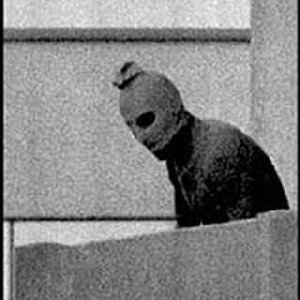
A Black September terrorist on a balcony in the Olympic Village in September 1972, during what became known as the Munich Massacre, in which 11 Israeli athletes were kidnapped and killed.
The Black September Organization (BSO) was a Palestinian terror group, founded in 1970. The group’s name came from the conflict known as Black September, which began on September 16, 1970, when King Hussein of Jordan declared military rule in response to an attempt by the fedayeen to seize his kingdom, resulting in the deaths or expulsion from Jordan of thousands of Palestinians. The BSO began as a small cell of Fatah men determined to take revenge on King Hussein and the Jordanian army. Recruits from the PFLP, as-Sa’iqa, and other groups also joined.
In the late 1960s, tensions between Palestinians and the Jordanian government increased greatly; heavily armed Arab resistance elements had created a virtual “state within a state” in Jordan, eventually controlling several strategic positions in that country. After their “victory” in the Battle of Karameh, Fatah and other Palestinian militias began taking control of civil life in Jordan. They set up roadblocks, publicly humiliated Jordanian police forces, molested women and levied illegal taxes – all of which Arafat either condoned or ignored.
In 1970, the Jordanian government moved to regain control over its territory, and the next day, King Hussein declared martial law. By September 25, the Jordanian army achieved dominance in the fighting, and two days later Arafat and Hussein agreed to a series of ceasefires. The Jordanian army inflicted heavy casualties upon the Palestinians – including civilians – who suffered approximately 3,500 fatalities. Two thousand Fatah fighters managed to enter Syria. They crossed the border into Lebanon to join Fatah forces in that country, where they set up their new headquarters.
The BSO is best known for the kidnap and murder of 11 Israeli athletes, and the murder of a German police officer, during the September 1972 attack on the Olympic Village in Munich, Germany, which became known as the Munich massacre.
Structure of the group
Abu Iyad, former deputy chief of the PLO, said that the BSO denied any ties to Fatah.
There is disagreement between historians, journalists, and the primary sources regarding the nature of the BSO and the extent to which it was controlled by Fatah, the PLO faction controlled at the time by Yasser Arafat.
In his book Stateless, Salah Khalaf (Abu Iyad), Arafat’s chief of security and a founding member of Fatah, wrote that:
“Black September was not a terrorist organization, but was rather an auxiliary unit of the resistance movement, at a time when the latter was unable to fully realize its military and political potential. The members of the organization always denied any ties between their organization and Fatah or the PLO.”
Abu Iyad’s claim was contradicted by Mohammed Daoud Oudeh, also known as Abu Daoud, a BSO operative and former senior PLO member, who, according to a 1972 article in the Jordanian newspaper Al-Dustur, told Jordanian police:
“There is no such organization as Black September. Fatah announces its own operations under this name so that Fatah will not appear as the direct executor of the operation.”
A March 1973 document released in 1981 by the U.S. State Department seemed to confirm that Fatah was Black September’s parent organization.
According to American journalist John K. Cooley, the BSO represented a
“total break with the old operational and organizational methods of the fedayeen. Its members operated in air-tight cells of four or more men and women. Each cell’s members were kept ignorant of other cells. Leadership was exercised from outside by intermediaries and ‘cut-offs’ [sic]”, though there was no centralized leadership (Cooley 1973).
Black September was formed to take revenge for King Hussein’s expulsion of the PLO from Jordan after an attempt to take over his kingdom.
Cooley writes that many of the cells in Europe and around the world were made up of Palestinians and other Arabs who had lived in their countries of residence as students, teachers, businessmen, and diplomats for many years. Operating without a central leadership (see Leaderless resistance), it was a “true collegial direction” (ibid). The cell structure and the need-to-know operational philosophy protected the operatives by ensuring that the apprehension or surveillance of one cell would not affect the others. The structure offered plausible deniability to the Fatah leadership, which was careful to distance itself from Black September operations.
Fatah needed Black September, according to Benny Morris, professor of history at Ben-Gurion University. He writes that there was a “problem of internal PLO or Fatah cohesion, with extremists constantly demanding greater militancy. The moderates apparently acquiesced in the creation of Black September in order to survive” (Morris 2001, p. 379). As a result of pressure from militants, writes Morris, a Fatah congress in Damascus in August–September 1971 agreed to establish Black September. The new organization was based on Fatah’s existing special intelligence and security apparatus, and on the PLO offices and representatives in various European capitals, and from very early on, there was cooperation between Black September and the PFLP (ibid.)
The PLO closed Black September down in the fall of 1973, prompted, Morris says, by the “political calculation that no more good would come of terrorism abroad” (ibid. p. 383). In 1974 Arafat ordered the PLO to withdraw from acts of violence outside Israel, the West Bank, and the Gaza Strip.
Munich massacre
The group’s most well-known operation was the killing of 11 Israeli athletes, nine of whom were first taken hostage, and the killing of a German police officer, during the 1972 Summer Olympics in Munich.
Operations Bayonet, Spring of Youth and Wrath of God
Following the attack, the Israeli government, headed by Prime Minister Golda Meir, ordered Mossad to hunt for those known to have been involved. What was then known as Operation Bayonet was begun. By 1979, during what became known as Operation Wrath of God, at least one Mossad unit had assassinated eight PLO members. Among them was the leading figure of Ali Hassan Salameh, nicknamed the “Red Prince,” the wealthy, flamboyant son of an upper-class family, and commander of Force 17, Yasser Arafat’s personal security squad. Salameh was behind the 1972 hijacking of Sabena Flight 572 from Vienna to Lod. He was killed by a car bomb in Beirut on January 22, 1979. In Operation Spring of Youth, in April 1973, Israeli commandos killed three senior members of Black September (and at least nine others) in Beirut. In July 1973, in what became known as the Lillehammer affair, six Israeli operatives were arrested for the murder of Ahmed Bouchiki, an innocent Moroccan waiter who was mistaken for Ali Hassan Salameh.
Recent remarks by Abu Daoud, the alleged mastermind of the Munich kidnappings, deny that any of the Palestinians assassinated by Mossad had any relation to the Munich operation, this despite the fact that the list includes 2 of the 3 surviving members of the kidnap squad arrested at the airport.
Other operations
Other actions attributed to Black September include:
- November 28, 1971: the assassination of Jordan’s prime minister, Wasfi Tel, in retaliation for the expulsion of the PLO from Jordan in 1970-71;
- December 1971: attempted assassination of Zeid al Rifai, Jordan’s ambassador to London and former chief of the Jordanian royal court;
- February 1972: sabotage of a West German electrical installation and a Dutch gas plant;
- May 1972: hijacking of a Belgian aircraft, Sabena Flight 572, flying from Vienna to Lod.
- March 1, 1973: attack on the Saudi embassy in Khartoum, killing Cleo Noel, United States Chief of Mission to Sudan, George Curtis Moore, the US Deputy Chief of Mission to Sudan, and Guy Eid, the Belgian chargé d’affaires to Sudan.
Tanzim
Tanzim (Organization in Arabic) is a faction of the Palestinian al-Fatah movement. It is seen as a more militant “new guard” within Fatah, as opposed to the “old guard” which supported the Oslo peace process. Tanzim came to prominence in the street fighting which marked the beginning of the second Palestinian Intifada. Its members tend to be younger than those of other Fatah factions, often having grown up in the post-Oslo era. Unlike the mainstream Fatah movement, it includes Christian members. One of its leaders is Marwan Barghouti. Many Tanzim members have joined the al-Shaid Yasser Arafat Brigades (formerly the al Aqsa Martyrs’ Brigades).
Tanzim has recruited a number of female suicide bombers, including Andaleeb Takafka, a 20-year-old Bethlehem woman who, on April 12, 2002, detonated an explosive belt at a Jerusalem bus stop, killing six Israelis, and injuring sixty.
Al-Aqsa Martyrs’ Brigades
The al-Aqsa Martyrs’ Brigades (كتائب شهداء الأقصى) are a Palestinian armed terrorist group closely linked to the Fatah party. They have been one of most active forces in the al-Aqsa Intifada, emerging shortly afterwards. This militia was originally named after the Al-Aqsa Mosque, one of Islam’s holiest sites and an icon for the Palestinian movement. The group’s membership is primarily drawn from the ranks of Tanzim, (organization in Arabic), a militant youth group within al-Fatah. Following Yasser Arafat’s death on November 11, 2004, the Al-Aqsa Martyrs’ Brigades announced that they will sign their attacks in the name Brigades of Shahid Yasser Arafat.
The group initially vowed to target only Israeli soldiers and settlers in the West Bank and Gaza Strip and carry out guerrilla warfare against the Israeli military, though from early 2002 it began a series of attacks against civilians in Israeli cities. In March 2002, after a deadly al-Aqsa Brigades suicide bombing in Jerusalem, the US State Department added the group to the list of foreign terrorist organizations.
At that time, many Palestinian sources stated that the group was not officially backed by Arafat and Fatah, though brigade members tend also to be members of Fatah, the Palestinian leader’s political faction, and Maslama Thabet, one of the group’s leaders, told USA Today “We receive our instructions from Fatah. Our commander is Yasser Arafat himself.” In June 2004 the current Palestinian Prime Minister openly stated that the Brigades were part of Fatah.
Israel charges that neither Fatah nor the Palestinian Authority have made any attempt to prevent their attacks. On December 18, 2003, Fatah decided to ask the leaders of the Al-Aqsa Martyr’s Brigades to join the Fatah Council, recognizing it officially as part of the organization.
Furthermore, Israel published documents allegedly found in Arafat’s compound, claiming that they prove Arafat knowingly sponsored Al-Aqsa attacks; US president George W. Bush used these documents to justify calling for the replacement of Arafat. On Oct. 2005, when the President of Iran Mahmoud Ahmadinejad quoted from Ayatollah Ruhollah Khomeini to “Wipe off Israel of the map” the Al-Aqsa martyrs brigade issued a statement saying that they hold “Identification with and overall support of the position and declaration of the Iranian President, who called with all honesty to wipe Israel off the map of the world”.
Relationship with Arafat and Fatah
The group’s relationship with Arafat was subject to conflicting information from leaders within the group. Maslama Thabet, one of the group’s leaders in the West Bank town of Tulkarm, told USA Today in March 2002: “We receive our instructions from Fatah. Our commander is Yasser Arafat himself.” While another leader Naser Badawi, told the New York Times days later that while “we respect our leader,” the decision “to carry out attacks remains with the Aqsa Brigades leadership.” Badawi added that Arafat had, at that point, never approached the group to ask it to stop its suicide bombings, which Arafat publicly condemned.
In November 2003 BBC journalists uncovered a payment by Fatah of $50,000 a month to Al-Aqsa. (see link below) This investigation, combined with the documents allegedly found by the IDF, led Israel to draw the conclusion that the Al-Aqsa Martyrs’ Brigades have always been directly funded by Arafat. In June 2004 the Palestinian Prime Minister openly stated this
“We have clearly declared that the Aksa Martyrs Brigades are part of Fatah. We are committed to them and Fatah bears full responsibility for the group.”
Israel arrested Marwan Barghouti, a leader of the group in April 2002, and in August charged him with multiple counts of murder, conspiracy to murder and membership in a terrorist organization. In addition to his “shadow job” with the group, Barghouti had also served as the general secretary of Fatah in the West Bank.
In July 2004, Ahmed Qurei, Prime Minister of the Palestinian Authority explicitly stated the relationship between Fatah and the al-Aqsa Martyrs Brigades:
“The Al-Aqsa Martyrs Brigades, military wing of the Fatah movement will not be dissolved and Fatah will never relinquish its military wing.”
Activities
The al-Aqsa brigades are responsible for dozens of suicide bombings and many more shooting attacks against Israeli vehicles in the West Bank. Some notable suicide bombings committed by the group were:
- March 2, 2002: Beit Yisrael, Jerusalem – 11 killed.
- January 5, 2003: Southern Tel Aviv central bus station – 22 killed.
- January 29, 2004: Rehavia, Jerusalem, bus line 19 – 11 killed.
- March 14, 2004: Port of Ashdod – 10 killed. (together with Hamas)
- On October 16, 2005, the al-Aqsa Martyrs’ Brigades claimed responsibility for a shooting attack at the Gush Etzion junction, killing three Israelis and wounding three others.
Some of the al-Aqsa brigades’ attacks were committed by minors. On March 24, 2004, a Palestinian teenager named Hussam Abdo was caught in an IDF checkpoint carrying an explosive belt. Following his arrest, an al-Aqsa Martyrs’ Brigade teenagers’ militant cell was exposed and arrested in Nablus. However, the Brigades still using children as suicide bombers, as on September 23, 2004 a 15-year-old suicide bomber was arrested by Israeli security forces.
The Al-Aqsa Martyrs Brigade, like many militia groups, is noted for the use of promotional posters in the main cities of Palestine. The Al-Aqsa Martyrs’ Brigades have attacked Palestinians as well as Israelis. Their Palestinian targets range from opponents of Arafat’s rule to journalists to moderates and suspected collaborators. In November and December, 2003 they killed the brother of Ghassan Shakaa (the mayor of Nablus). On February 2004 Shakaa filed his resignation from office in protest of the Palestinian Authority’s lack of action against the armed militias “rampaging” the city. Through the first three months of 2004, a number of attacks on journalists in the West Bank and Gaza Strip have been blamed on the Brigades as well, including the attack on the Arab television station Al-Arabiya’s West Bank offices by masked men self-identifying as members of the Brigades. Palestinian journalists in Gaza called a general strike on February 9 to protest this rising violence against journalists.
The Al-Aqsa Martyrs’ Brigades have taken prominent part in July 2004 riots in the Gaza Strip, where Palestinian officers has been kidnapped and PA security headquarters buildings and policemen were attack by armed gunmen. These riots led the Palestinian cabinet to declare a state of emergency. One media outlet described the situation in the Palestinian Authority as anarchy and chaos.
The Al-Aqsa Martyrs’ Brigades have carried out serveral joint attacks with the Islamist group Hamas. These attacks were committed mainly in the Gaza Strip.
The Al-Aqsa Martyrs’ Brigades have also carried out joint attack with other militant groups such as Palestinian Islamic Jihad, The Popular Resistance Committees and in the West Bank, even with Hizbullah.
The firing of Qassam rockets from the Gaza Strip by Hamas and the Al-Aqsa Martyrs’ Brigades into Israel is strongly opposed by those living closest to the firing location due to frequent Israeli military responses to Qassam rocket launches. On July 23, 2004, a 15 year old Arab boy was shot and killed by Palestinian militants after he and his family physically opposed their attempt to set up a Qassam rocket launcher outside the family’s house. Five other individuals were wounded in the incident.
The European Union’s Gaza offices were raided by 15 masked gunmen from al-Aqsa Martyrs’ Brigades on 30th January 2006. They demanded apologies from Denmark and Norway regarding the Jyllands-Posten Muhammad cartoons left 30 minutes later without shots fired or injuries.
List of al-Aqsa Brigade members
List of notable members of the al-Aqsa Martyrs’ Brigade, ordered lexicographically according to the last name, includes active militants and militants that were killed or arrested by the Israeli security forces:
- Naif Abu-Sharah: local commander in Nablus (killed by IDF forces).
- Marwan Barghouti: high commander (arrested by the IDF and sentenced for life in prison for killing Israeli civilians).
- Sirhan Sirhan: (Not to be confused with the Sirhan Sirhan allegedly responsible for killing Robert Kennedy.) Alledly responsible for killing 5 people, including a mother and her 2 children in Kibbutz Metzer. Killed randomly in an Israeli house demolition.
- Zakaria Zubeidi: local commander in Jenin, known for his alleged relationship with Israeli far left activist Tali Fahima.
Fatah Hawks
The Fatah Hawks are a Palestinian militant group, an offshoot of the Al-Aqsa Martyrs Brigade which has links to the dominant Fatah Movement. The group has carried out attacks against Israeli military personnel in the Gaza Strip.
They first appeared in public by claiming joint responsibility with Hamas for an attack on the Rafah border crossing on the Israeli military-controlled Egyptian border crossing with Gaza near Rafah on December 12, 2004, which resulted in 5 Israeli soldiers being killed and ten others wounded. (see Al-Aqsa Intifada)
Force 17
Force 17 is an elite VIP protection unit of the Palestinian Fatah movement and later of the Office of the Chairman of the Palestinian Authority.
Their main job is the protection of the Palestinian President, and other senior Palestinian government figures. They also provide security for visiting international delegations.
Force 17 was formed in the early 1970s by senior Fatah militant Ali Hassan Salameh (Abu Hassan). Unlike various units formed within Fatah previously the premise of Force 17 was the defence of the leadership of the movement from assassination by Israeli commandos or by rival Palestinian insurgent groups. The importance of such a unit was made clear by the humiliating losses suffered by the PLO leadership in Operation Spring of Youth (1973). Force 17 was used by Fatah to protect PLO Chairman Yasser Arafat, his top lieutenants, as well as diplomats of the organization. They accompanied Arafat during his 1974 address to the United Nations in New York City.
Two of the key setbacks of the group were the 1988 Israeli commando raid that killed Khalil a-Wazir (Abu Jihad) at his villa in Tunis, and the bloodier assassination of Salah Khalaf (Abu Iyad) in 1991 by a member of Sabri al-Banna’s (Abu Nidal) group not far from there. This came after a relatively successfully period when senior Fatah leaders emerged relatively unscathed from the Lebanese Civil War, despite being targeted by Syria, Israel, Christian militias, and Palestinian rivals within and outside of Fatah. They contributed greatly to the legend that Arafat had nine lives. In 1979 their founder Salameh was assassinated in Beirut, along with a group of his own bodyguards.
In the 1990s the unit was evolved from an organ of Fatah to an official unit of the Palestinian Authority’s national security apparatus. During the Second Intifadeh Force 17 or members of it were illegaly tasked with responsibilities ranging from acquiring and securing arms shipments for Palestinian armed groups loyal to Arafat, to carrying out terror attacks or resisting incursions by Israeli military or police forces into PA territory (Area A). Proof of these actions were allegedly found during Operation Defesive Shield (June 2002) when IDF forces besieged Arafat and Force 17 in his Muqat’ah compound in Ramallah, and broke into the PA’s own file records.
Since Arafat’s death the unit’s future has become increasingly clouded, given the rise in internal tensions within the PA security organs, the threat to the hegemony of PA Chairman Mahmoud Abbas (Abu Mazen), and the victory of Hamas in 2005 parliamentary elections. The unit is staffed almost entirely by fanatical Fatah stalwarts who would have difficulty accepting a Hamas leader should Abu Mazen be replaced in the near future.
Sources: Wikipedia and martinfrost.ws.
Download The Fatah Charter August 2009, Here.
Download The Hamas Charter, Here.
Download The PLO Charter 1968, Here.
Download The Palestine National Charter 1964, Here.



 RSS
RSS


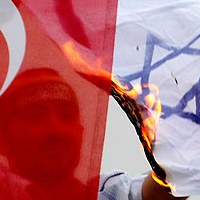
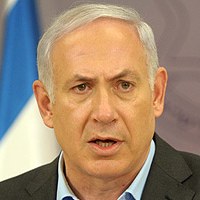
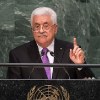
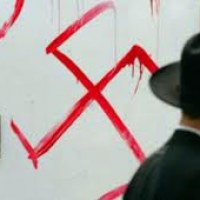
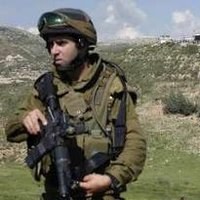




Fatah http://j.mp/bPXMci
[…] See the original post: Fatah | Middle East Affairs Information Center | Analysis … […]
[…] Fatah | Middle East Affairs Information Center | Analysis … […]
RT @CrethiPlethi: Fatah http://j.mp/bPXMci
[…] This post was mentioned on Twitter by Elisabeth, Crethi Plethi. Crethi Plethi said: Fatah http://j.mp/bPXMci […]